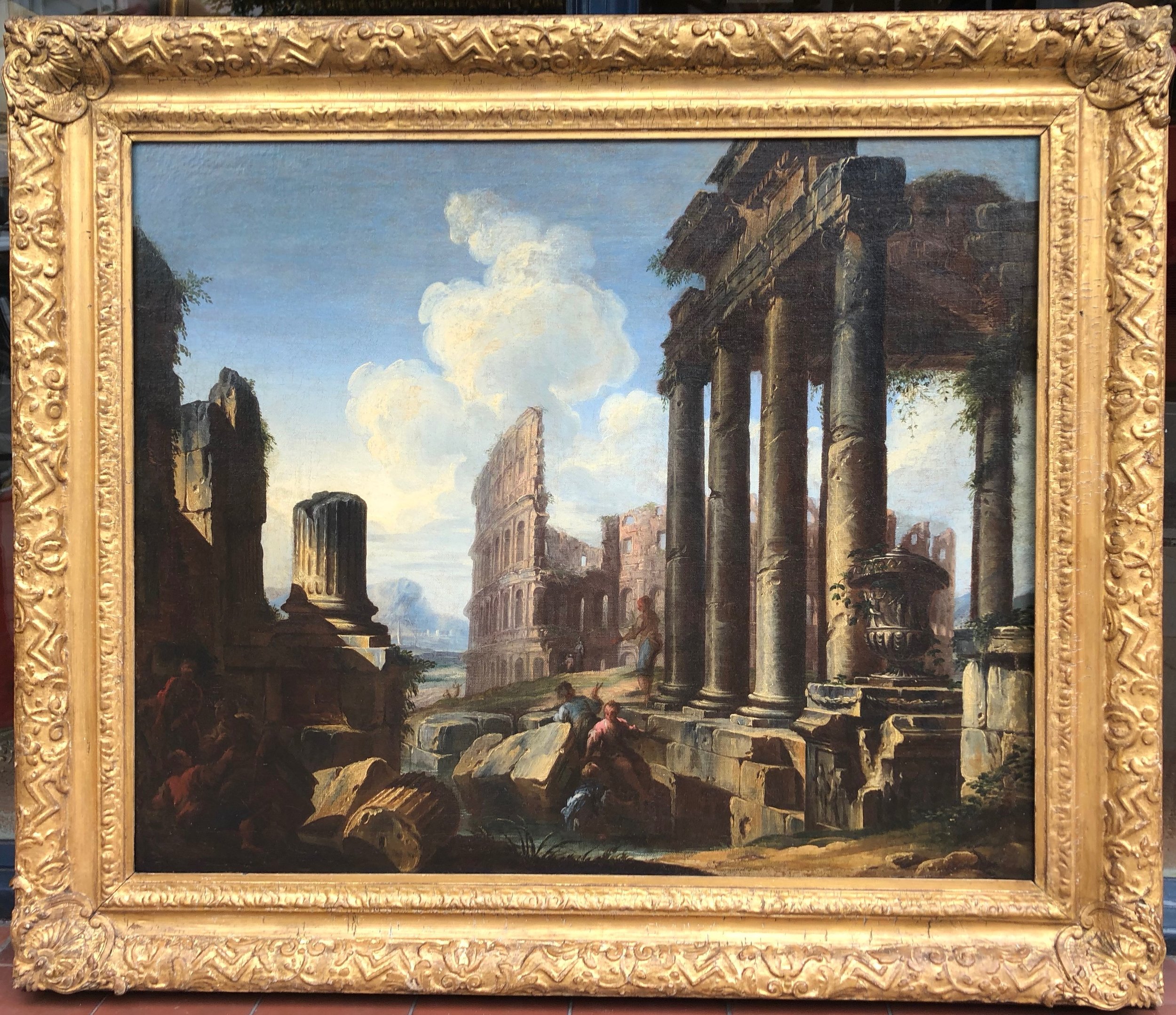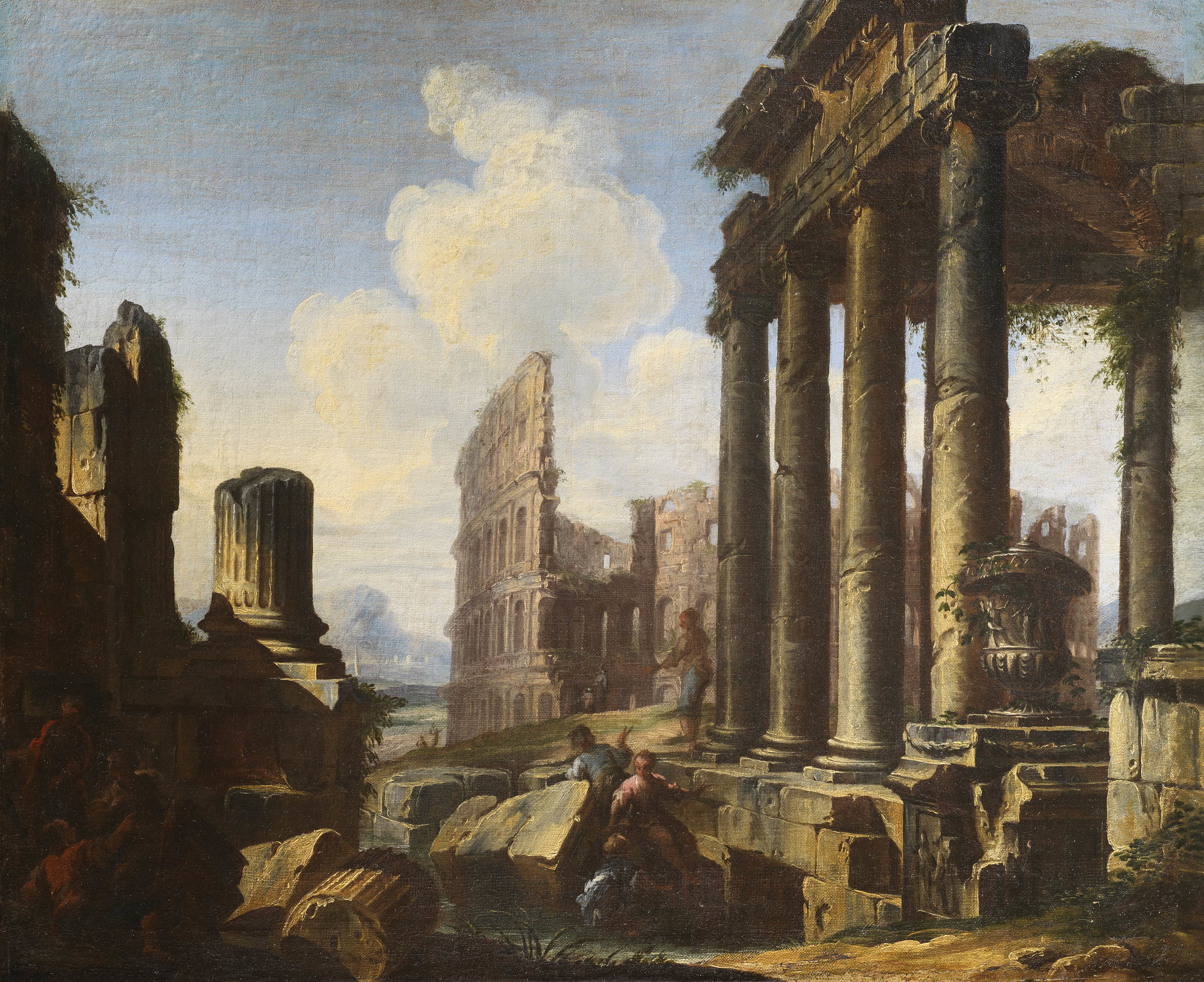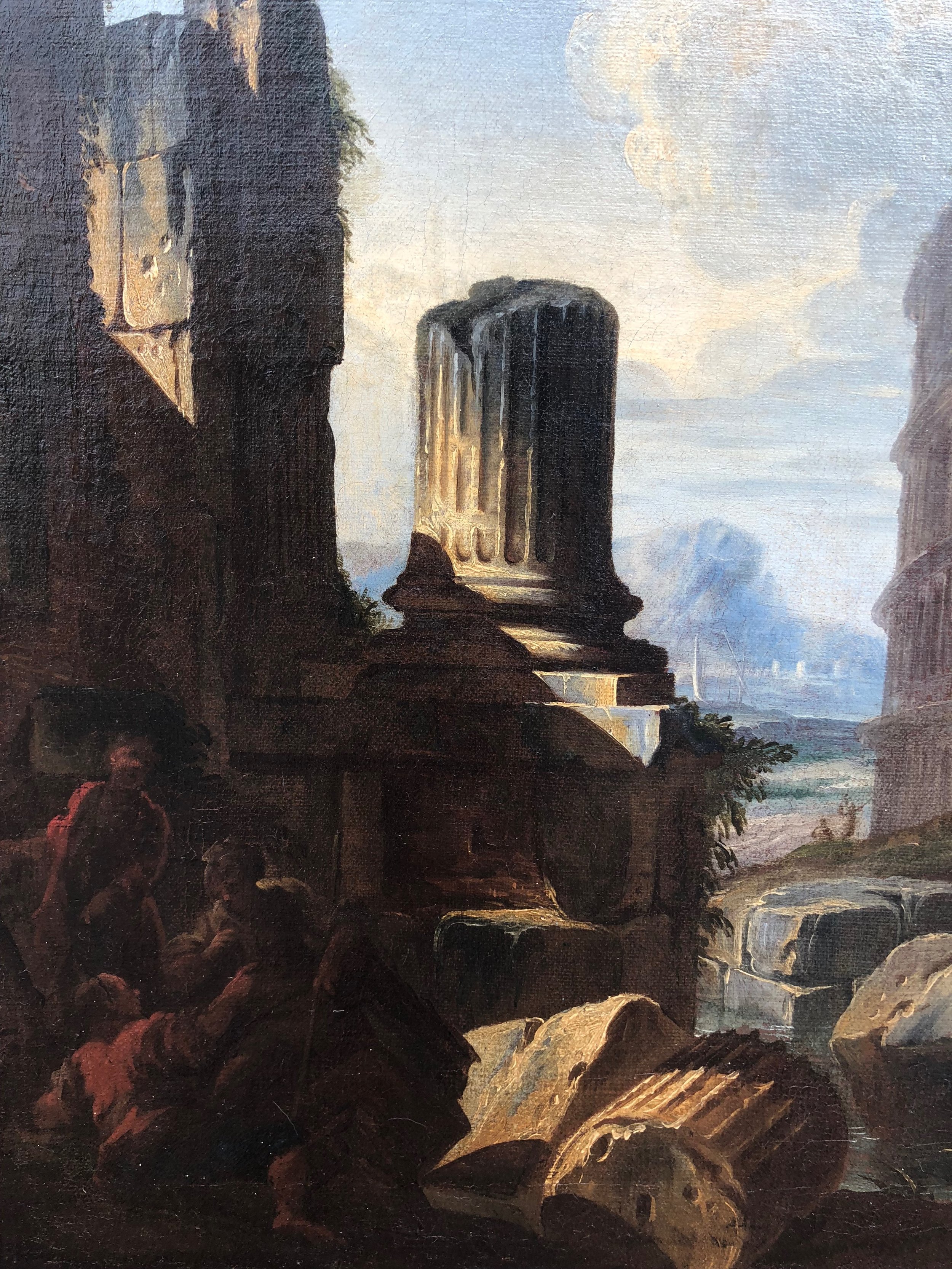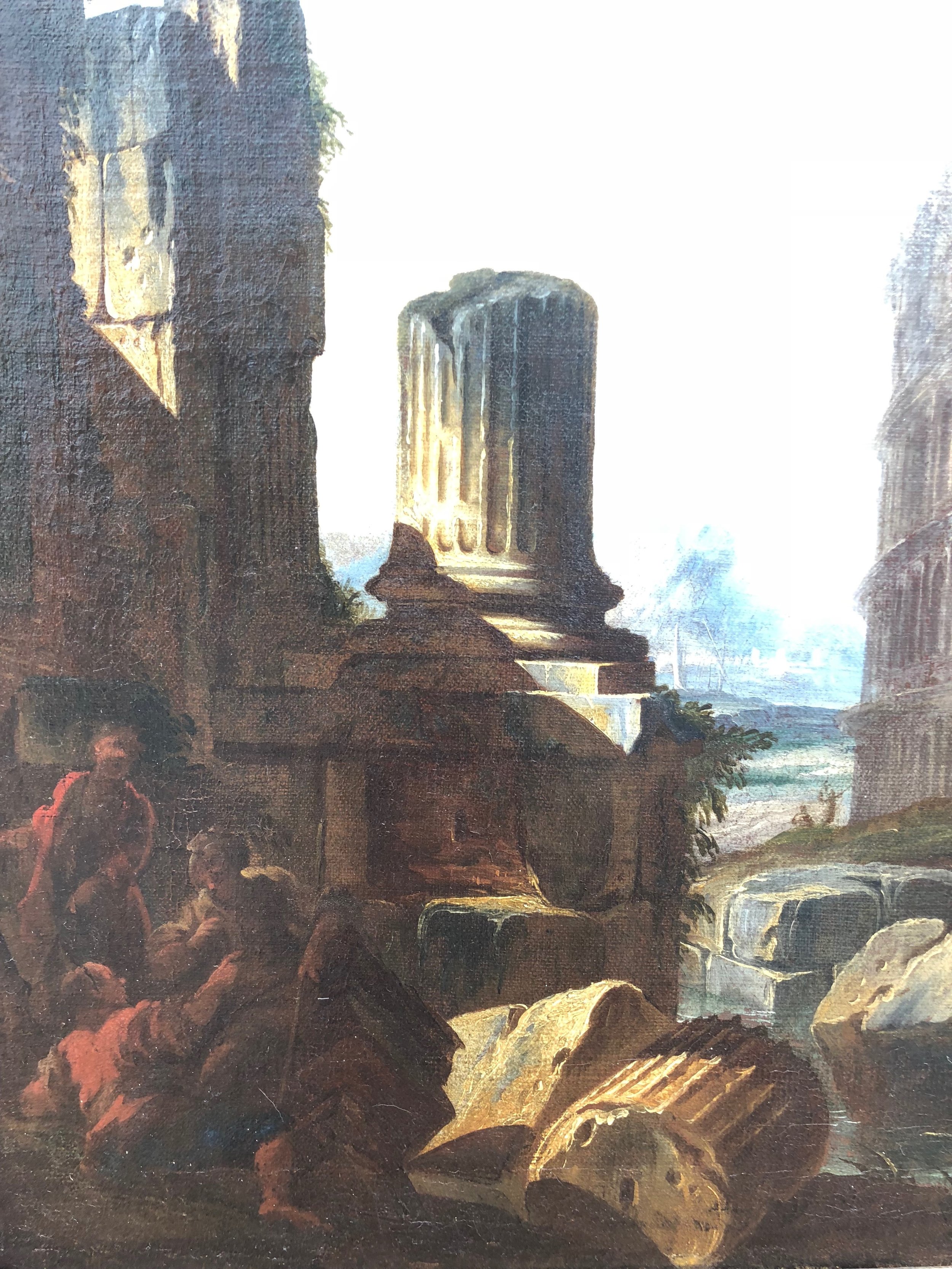ANDREA LOCATELLI (Rome 1695 – 1741)
A Capriccio of Classical Ruins and the Colosseum
Oil on canvas
30 ⅛ x 36 in. (76.5 x 91.5 cm.)
Price: Price on Application
Andrea was the son of Giovanni Francesco Locatelli who he studied under until 1708 before learning from Monsa Alto who specialized in marine scenery. In 1792, at age 17, Andrea along with Paolo Anesi became students of Bernardo Fergloni, also a marine genre specialist. By 1723, at 28 years old, he was referred to by Pio as a master. Locatelli was influenced by Jan Frans van Bloemen, Giovanni Ghisolfi, Gaspard Dughet, Claude Lorain, and especially Salvator Rosa. In turn he influenced such artists as Paolo Anesi Giovanni Paolo Panini, Paolo Monaldi, and Marco Ricci.
The subject matter most popular with the academic artists of this time was mainly sacred, historical or mythological themes. Locatelli broke with these traditions and concentrated on landscapes, a genre thought to be “inferior” by the art critics of his day. In fact, he was never allowed induction into the Academia di San Luca, a very prestigious mark of honour, even though his work was in great demand. Andrea Busiri Vici (the foremost authority on Locatelli) considered Locatelli as “the essential link in the evolution of European landscape painting during the eighteenth century.”
Locatelli was patronized by kings, queens, princes, cardinals and the wealthy, not only in Rome, but also throughout Europe. One family- the Colonna- owned 81 of his paintings. At a time when it was becoming fashionable to make the Grand Tour, his paintings spread widely. Demand caused him to duplicate dozens of nearly identical works. This may seem odd to us today, but at a time before photography, no one would have been aware of these “copies.” This was a very common practice by successful artists.
Early in his career, Locatelli specialised in romantic notions of the Latium countryside, frequently including improvised architectural elements of columns or buildings. Very few of these are thought to have been actual structures, although some were based on scenes along the Tiber and a well-known view of the Piazza Navona. In later years he leaned more to “grassy ruins” and countryside expanded with trees, peasants and farm animals being more prominent. Prior to about 1725, Locatelli’s works were considered “ruddy” in tone. A typical composition would contain figures of people or animals in the foreground with buildings in the mid-ground and mountains or water in the distance. Balancing this horizontal pattern were vertical elements of buildings, columns and trees – especially large oaks or ilex rising up from the foreground. A frequent feature is the presence of broken trees or stumps and Mediterranean shrubbery.
Vici stated, “Locatelli’s landscapes are remarkable for the sense of solitude they convey despite the fact that they are populated by figures. There is a sense of seclusion, a quality that induced one to turn from the colourless life of the community to the joy of the isolation of an interiorised existence.” Locatelli excelled at the combination of a landscape with a peasant scene.
Locatelli incorporated human figures and farm animals into his paintings and was considered skilled with horses. These became more prominent as his career advanced. He drew inspiration from the Bambocianti, a group of genre painters who travelled to Rome from about 1625 to the close of the 17th Century. Originally they were mainly Flemish or Dutch. The group derived its name from the nickname of Pieter Van Laer meaning “ugly doll or puppet” apparently a reference to his appearance.




